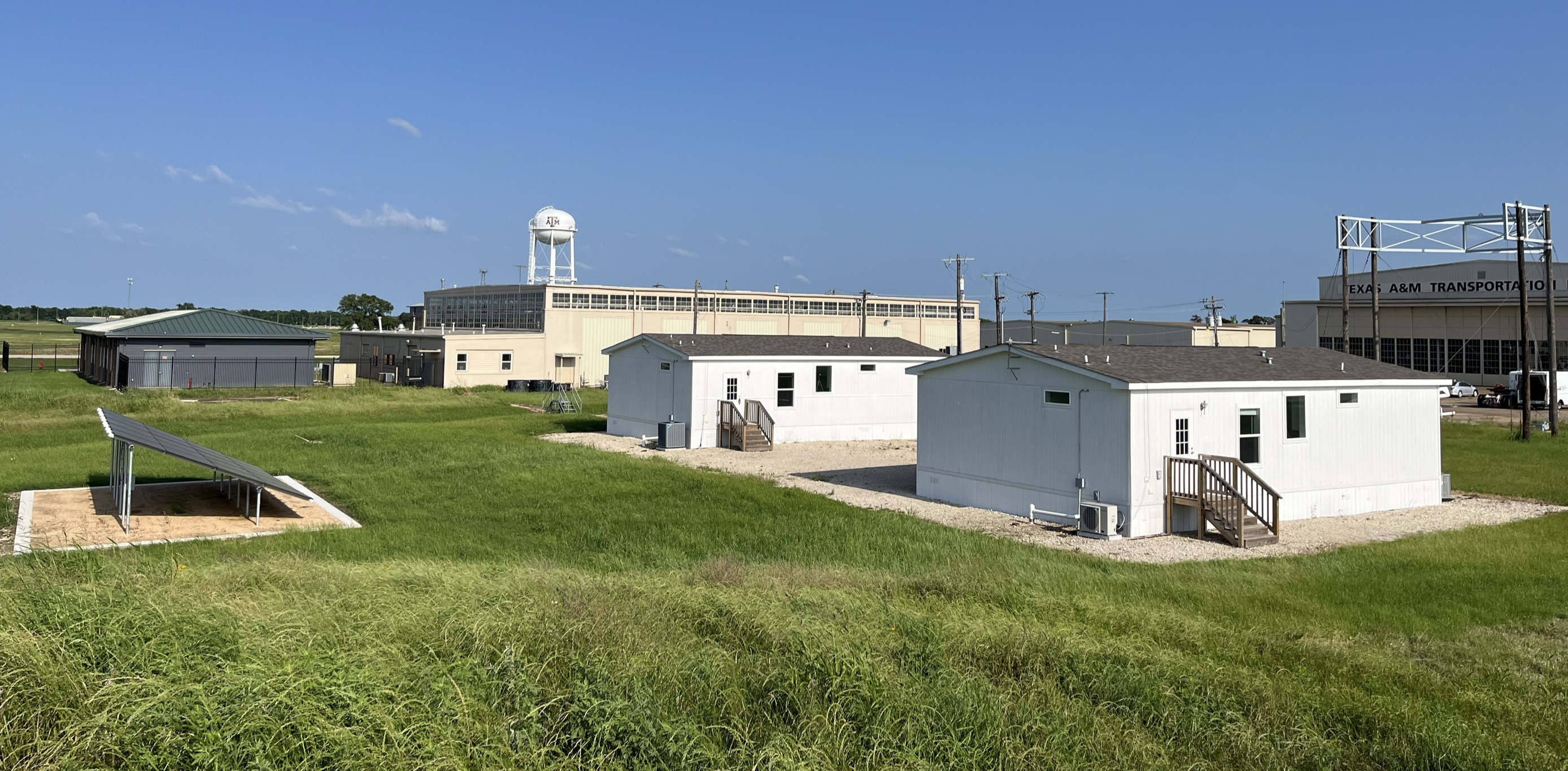The Texas A&M Smart and Connected Homes Testbed (TAM-SCHT) is located on the RELLIS campus in Bryan, Texas, United States. This testbed is used by the Building Energy and HVAC&R research group at Texas A&M University for smart home technology and smart grid applications research.

Building Profiles
- To determine the locations of these two lab homes, an optimization problem was formulated and solved using an architecture modeling program, Rhinoceros, and its plug-ins: Grasshopper, Ladybug, and Honeybee. The objective was defined as to minimize the solar condition difference of these two houses, which could be quantitatively represented as the number of hours that the houses are receiving different amounts of direct sunlight.
- These identical two homes are 1,200 ft² (111 m²), have 3 bedrooms and 2 bathrooms, and are equipped with removable interior walls which allow research to alter the floorplan.
- The location, tilt angle, and sizing configuration of PV panels are optimized using System Advisor Model (SAM) developed by National Renewable Energy Laboratory (NREL). The optimization objective was to maximize the PV nominal power generation and minimize the shading loss from the surrounding environment. The PV capacity is 2 kW, the inverter is 15 kW, and the battery is 9.6 kWh for each home.

(Click on a room on the floor plan to view photos of that room)
Building Features
- A local solar panel farm with an on-site battery will allow DER (distributed energy resources) and GEB (grid-interactive efficient building) research.
- The removable walls will aid in advanced envelope material testing, and smart appliances in the house allow for demand response operation to be tested.
- This testbed provides researchers with the capability to test a wide range of building envelope (e.g., wall and windows), HVAC and hot water operation and equipment in the residential building application, and verify simulations and models.


Metering and Monitoring
- The lab home testbed is heavily instrumented for a wide range of data collection and accurate measurements. The sensors can be grouped into different areas of interest for research purposes: building envelope and environmental data, whole house electrical metering, indoor air quality measurements, and HVAC performance.


Data Flow
The data flow of data acquisition and control is illustrated as shown in the figure below. Sensors report data to LabVIEW running on a PC, which also controls the load emulators to follow the hourly profiles. The data collected and the control signal of the lab homes will also be pushed to a cloud server to be accessed remotely.

Local Weather
Publications
- Firsich, Thomas, Zhiyao Yang, Fan Feng, and Zheng O’Neill. “Texas A&M Smart and Connected Homes Testbed (TAM-SCHT): An Evaluation and Demonstration Platform for Smart & Grid-interactive Technologies.” ASHRAE Transactions 128 (2022).
Contacts
- Dr. Zheng O’Neill, PhD, PE
J. Mike Walker ’66 Associate Professor
J. Mike Walker ’66 Department of Mechanical Engineering
Texas A&M University
Mechanical Engineering Office Building (MEOB) 326
College Station, TX, 77843
Ph: 979-845-4931 | Email: ZOneill@tamu.edu - Dr. Zhiyao Yang, PhD
Senior Research Engineer I
J. Mike Walker ’66 Department of Mechanical Engineering
Texas A&M University
College Station, TX, 77843
Email: z.yang@tamu.edu
